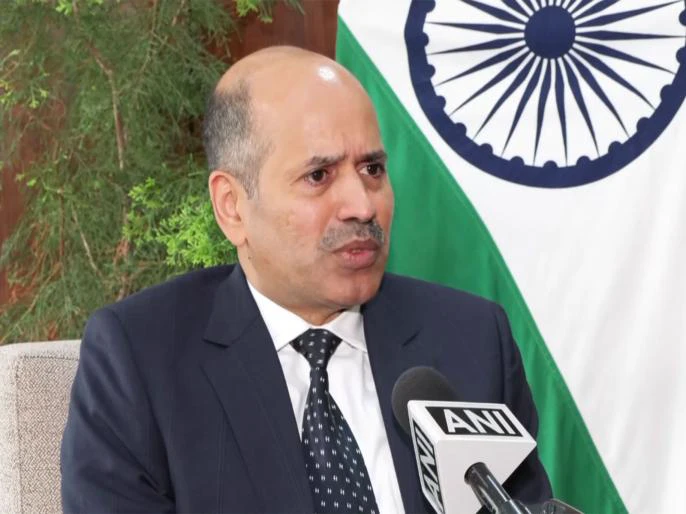India’s Ambassador to Bhutan, Sandeep Arya, on Tuesday highlighted the 1,020 megawatt Punatsangchhu-II Hydroelectric Project, a joint venture between India and Bhutan that will will boost Bhutan’s hydropower generation by 40% and export surplus power to India, strengthening the countries’ energy partnership.
Speaking with ANI, Arya highlighted hydropower as a key area of cooperation, leveraging Bhutan’s 35,000 MW potential.
“So hydropower is a very strong area for Bhutan in terms of a large number of rivers, etc., having huge potential, you know, estimated to be of the order of 35,000 megawatts. So, a 1020 megawatt project, which has been completed and for which we expect a joint inauguration tomorrow by the leaders of the two countries, I think, is a very important addition. It will add approximately 40% of the installed hydropower generation capacity in Bhutan. Therefore, it will become a crucial project for Bhutan’s own economic development. It’s a large power-generating plant, and the power produced will be used by the people of Bhutan, with any surplus being exported to India. In Bhutan, particularly the power generation peaks during the summer months,” he said.
He added that the project aligns with India’s growing energy demands, particularly during the summer months when Bhutan’s glacial rivers are at their peak.
“All because most of the rivers are glacial rivers. So I think that’s a time in which India also there is a great demand for power. So there is good synergy in that sense. Power generated from the Punatsangchhu-II to hydroelectric plant tomorrow which will be inaugurated will serve the people of Bhutan will also benefit the economy of Bhutan. It will produce power to India for our own use and I think it serves as a good synergy between the two countries in that area,” he said.
The ambassador emphasised enhanced connectivity, including physical infrastructure such as roads and railways, as well as digital links like FinTech and QR code-based payment systems. People-to-people ties, rooted in spirituality and culture, further cement the nations’ “special friendship”.
“The connectivity has many dimensions. One is, of course, the connectivity in terms of physical connectivity, know, which means Bhutan’s 80 % trade is with India. So there is a huge and they’re exposed to other countries beyond India are also they pass through India because then all the trading routes are through them. So development and streamlining of trading between the two countries, the infrastructure, the road development and the plans to build up railways connections in the future. So that’s one important area in which I think there will be important discussions and decisions tomorrow. The digital connectivity is also an important part Bhutan of course everybody needs lots of so there are. There is some work going on in that area,” he said.
“FinTech or financial technology or the QR code based system linking the financial systems in the two countries so that Indian travelers to Bhutan and Bhutanese travelers to India can use the payment using their domestic network of banks for the purpose of various services as they avail in each other countries. That’s another very important area of digital connectivity between the two countries,” he added.
The people-to-people connections have been very deep between both nations, based on spirituality, yoga, etc.
“The people level connectivity, the people of India and people of Bhutan and the spirituality, yoga, cinema and cultural performances. There are lots of facets of them. They also are a very important part of the connectivity between the two countries. It’s a very strong, very deep, what we call special friendship and unique relations between the two countries. So they already have a very, very strong foundation which have been developed over the decades between the two countries,” he said.
Arya sees immense growth potential, aligning with India’s Viksit Bharat 2047 vision and Bhutan’s high-income economy goals. The relationship, often referred to as one of India’s closest partnerships, is poised to reach new heights through educational, technological, and economic collaborations.
“And as I see it, I think the potential is immense. Both India, are looking at Viksit Bharat 2047. Bhutan also has lots of strong visions to take forward. They say a high-income economy. There are other development visions in Bhutan. So I think on the economic front, there is a natural synergy, I mean, being a very close, important neighbor through which kind of in terms of trade, economic relations, development partnership, the kind of common thinking and shared approach between the two countries politically towards each other and in terms of global thing, which is the Global Peace Prayer Festival,” he said.
“So I think it’s a relationship with immense potential to progress in different areas. There is educational partnership, technology partnership and various ways in which we can, I think, work together apart from cultural and people level connections,” he added.
Arya said that people called Bhutan-India relations as closest partnership between India and neighboring countries.
“So I see it as a country and relations to be those of immense potential on a very strong, very close footing. Some people may also describe it as the closest or the closest partnership between India and its neighbouring countries. And I think the potential for taking it forward, and that’s our objective, I think, with the support of the government of the two countries to really take it to newer heights in the future,” he said.
Prime Minister Narendra Modi will pay a State visit to Bhutan from November 11-12.
During the visit, PM Modi will also participate in the Global Peace Prayer Festival organised by the Royal Government of Bhutan.
